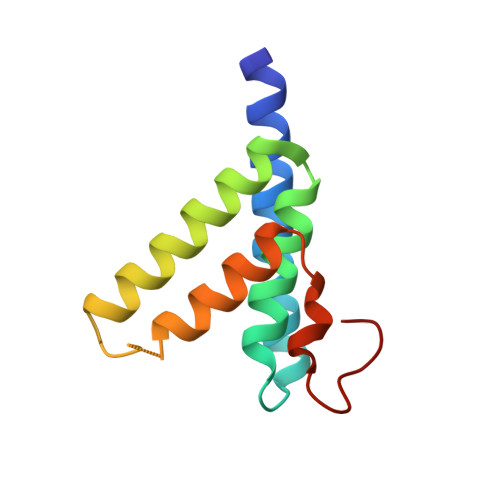Molecular basis for retinol binding by serum amyloid A during infection.
Hu, Z., Bang, Y.J., Ruhn, K.A., Hooper, L.V.(2019) Proc Natl Acad Sci U S A 116: 19077-19082
- PubMed: 31484771
- DOI: https://doi.org/10.1073/pnas.1910713116
- Primary Citation of Related Structures:
6PXZ, 6PY0 - PubMed Abstract:
Serum amyloid A (SAA) proteins are strongly induced in the liver by systemic infection and in the intestine by bacterial colonization. In infected mice, SAA proteins circulate in association with the vitamin A derivative retinol, suggesting that SAAs transport retinol during infection. Here we illuminate a structural basis for the retinol-SAA interaction. In the bloodstream of infected mice, most SAA is complexed with high-density lipoprotein (HDL). However, we found that the majority of the circulating retinol was associated with the small fraction of SAA proteins that circulate without binding to HDL, thus identifying free SAA as the predominant retinol-binding form in vivo. We then determined the crystal structure of retinol-bound mouse SAA3 at a resolution of 2.2 Å. Retinol-bound SAA3 formed a novel asymmetric trimeric assembly that was generated by the hydrophobic packing of the conserved amphipathic helices α1 and α3. This hydrophobic packing created a retinol-binding pocket in the center of the trimer, which was confirmed by mutagenesis studies. Together, these findings illuminate the molecular basis for retinol transport by SAA proteins during infection.
Organizational Affiliation:
Department of Immunology, University of Texas Southwestern Medical Center, Dallas, TX 75390; Zehan.Hu@utsouthwestern.edu Lora.Hooper@utsouthwestern.edu.

















